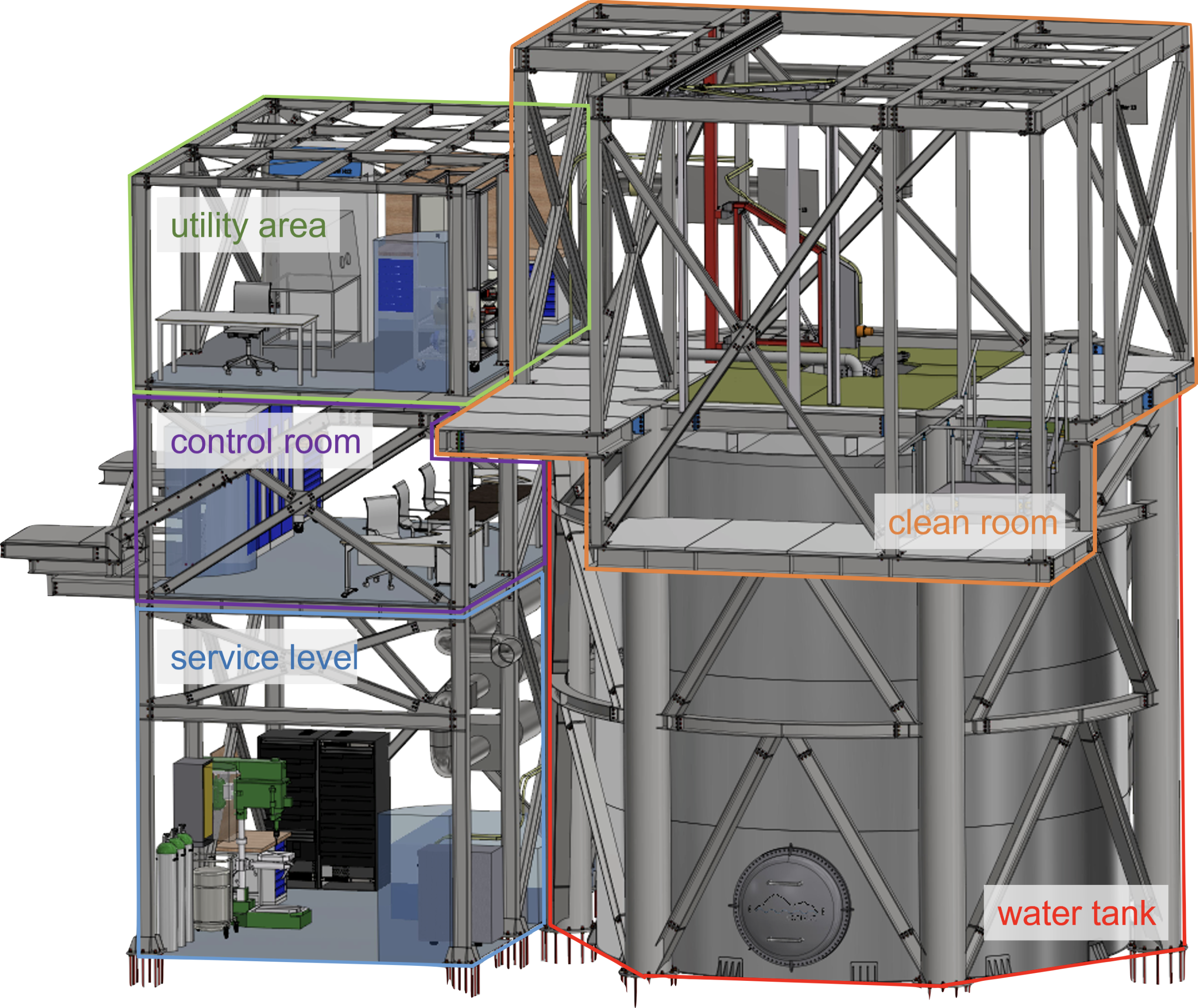The COSINUS experimental setup was designed keeping in mind the strict radio-purity requirements for a low-background experiment. The experiment is based in Hall B of LNGS, Italy under a rock overburden equivalent to 3,600 meters of water.
A comprehensive Monte Carlo simulation was carried out to define the details of the whole infrastructure, with the goal to reach a background lower than ~0.05 counts/kg/year in the region of interest [1].


The setup consists of four main parts:
- A 7m tall, 7m wide instrumented water tank, designed to moderate the extenal neutron flux. A dry-well, held with 3 support rods is situated in the middle.
- The dilution refrigerator, located in a dry-well inside the water tank, provides the low temperatures necessary to operate the detectors at mK-temperatures.
- A clean room allows for detector mounting and includes a lifting system to move the cryostat in and out of the dry-well and external Cu shield.
- A three-floor control building is located next to the tank.

To reduce the rate of cosmogenic neutron events, which is typically higher than the radiogenic background, an active muon veto system is used. The Monte Carlo simulations predict that the rate of cosmogenic neutron events is in the order of (3.5 ± 0.7) cts kg−1 yr−1 [1], which corresponds to roughly one event in 100 kg-days. The active muon veto, consisting of approximately 30 photomultiplier tubes installed in the water tank, is expected to reduce the rate of cosmogenic neutrons to the level of radiogenic neutrons, which the Monte Carlo simulation predicts to be 0.05 cts kg−1 yr−1. Ongoing radiopurity screening efforts are being conducted on all materials in the vicinity of the detectors.

The COSINUS cryogenic calorimeters require a temperature of approximately 10 mK. This is achieved using a 3He/4He dilution refrigerator. Traditionally, the pre-cooling from room temperature to 4 K has been achieved using liquid nitrogen (LN2) and liquid helium (LHe) (thus named “wet” dilution refrigirators). The successive cooling stage is realized by a closed cycle of a mixture of 3He and 4He to cool from 4 K to the base temperature of 10 mK.
For COSINUS, a dry dilution refrigerator is used, which provides the necessary cooling power to 4 K using a Pulse Tube cryocooler[2], thereby eliminating the need for an external supply of cryogenic liquids. The successive cooldown down to base temperature is identical to the “wet” systems.
References:
[1] Angloher, G. et al., Simulation-based design study for the passive shielding of the COSINUS dark matter experiment, Eur. Phys. J. C 82.3 (2022)
[2] K. Uhlig, W. Hehn, 3He/4He Dilution refrigerator precooled by Gifford-McMahon refrigerator, Cryogenics. 37 (5): 279, (1997)

